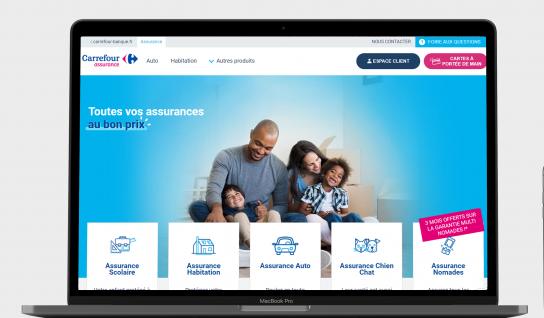Carrefour Assurance
A phygital platform to boost subscriptions

Part of the same group as supermarket giant Carrefour, Carrefour Assurance is an insurance provider and aggregator (home, car, gadget, school and pet insurance).
In 2017, Carrefour Assurance sold its products through agencies, over the telephone or via comparison tools. In order to strengthen its market position and offer its customers a more comprehensive experience, Carrefour Assurance wanted to create its own website and redesign its path to purchase.
Challenge
The goal for carrefour assurance was to attract new visitors and pioneer new models.
In addition to increasing the number of policies sold online, Carrefour Assurance also wanted to improve its upselling and create synergy between its online and physical points of sale, leveraging its network of stores and its advisors available in branch and by telephone. Moreover, with retail partners and comparison sites representing a major source of sales for the insurer, it was vital that they were a key consideration when designing the customer journey.
With this in mind, SQLI’s teams and Carrefour Assurance decided to start with a blank page, as if they were a brand-new startup.
Solution implemented
Using a blank page strategy, SQLI’s teams designed purchase tunnels for the various insurance products (home, car, gadget and pet). Additionally, user testing was carried out to simplify and optimise the different buying stages as much as possible.
The site was also given a Content Management System (CMS): eZ Platform by Ibexa. The aim was to attract visitors to the site by posting engaging content on the main topics related to insurance policies (housing, pets, etc.)
SQLI’s teams were proactive and provided advice on the architecture and technical solutions used. By combining the PaaS Platform.sh with the CMS eZ Platform, they provided Carrefour Assurance with an extendable and modular solution, which can evolve as new insurance products are created. Lastly, in order to ensure its stability, particularly during periods of high demand, an application-based monitoring system – New Relic – was set up.



